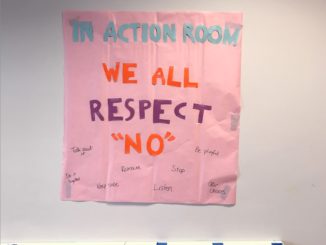People of all ages sometimes seek out crying when they need it, because crying can be very healing and stress-relieving.
Adults might put on a sad movie, listen to music that holds a lot of meaning for them, or look through old photos or keepsakes to make themselves cry.
Some children might also seek out sad music or sad parts of TV shows or movies, or bring their parents sad books to read them. Other children might seek crying in other ways. Sometimes children will ask for something they already know they can’t have, or otherwise push up against a boundary, in order to give themselves a “reason” to cry and let out emotions inside them that they can’t otherwise figure out how to get out.
For toddlers, this often looks like melting down about “nothing”. For preschoolers and young children, it gets a little more sophisticated as they specifically try to seek out something they know will be a “no”. Both of them are stemming from the same place.
This can be confusing or scary for the child’s adults, especially if the adults believe that tears are an indication that something is wrong with themselves (the adults) or that they indicate things need to be “fixed” by themselves (the adults). If an adult feels threatened by a child crying or like they’ll do everything they possibly can do avoid a meltdown, the adult may find themselves in an accidental loop where the adult is letting go of a boundary, then the child, who needs an emotional release, immediately goes in search of another one.
I’m not saying to arbitrarily hold boundaries to make your kid cry. Far from it! Sometimes a adult says “no” to something and only realizes after the child feels strongly about it that it doesn’t actually matter that much to the adult. Maybe it was a silly boundary in the first place. Maybe it wasn’t well thought through. Or maybe it was merely “inconvenient” to the adult but in light of it being “important” to the child they’re willing to reconsider. There is nothing wrong with saying to a child, “I’m sorry, babe, I didn’t realize this meant so much to you! I thought about it some more and yes, we can do/have that today.” This isn’t teaching them to “cry so you give in”. This is teaching your child that when something matters powerfully to them, you, who are on their team, really will think about how to make it possible.
On the other hand, if something is actually important, then an adult can feel confident in holding on to something that’s actually important and know that their child will be OK. Crying with a loved one there to support you through it is far from a terrible or scary thing. It’s actually a very healing and regulating thing.



